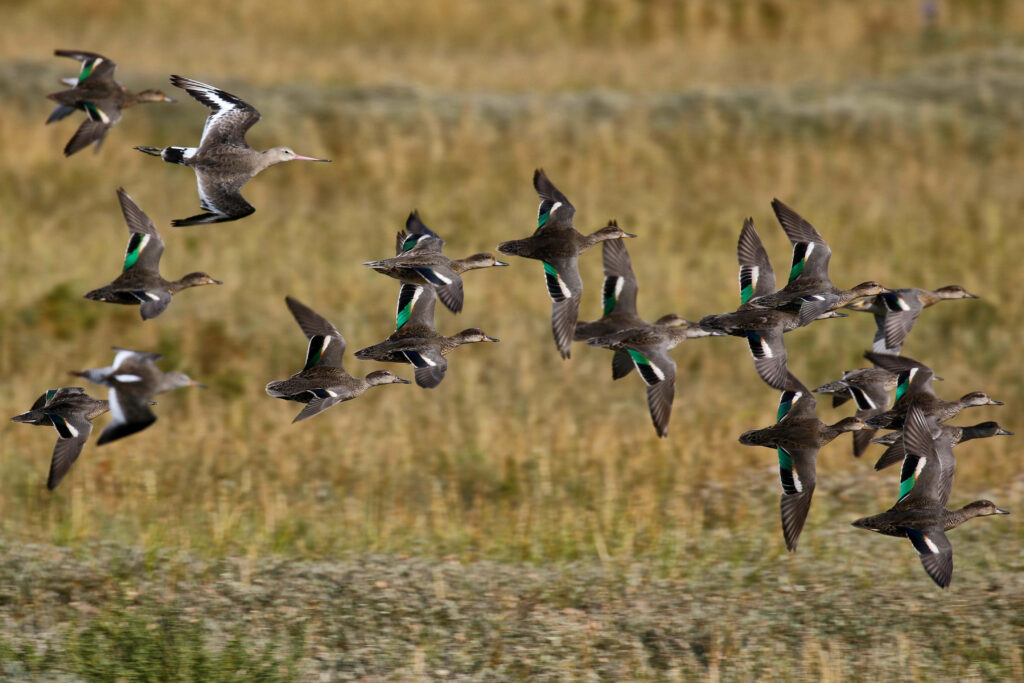Now is the ideal time to sign up to take part in the BTO Breeding Bird Survey (BBS) for this breeding season and to arrange to come along to an informal practice session with other volunteers. Some squares have recently become available and there are plenty of squares available right across the county.
This national monitoring scheme is administered by the BTO and jointly funded by the BTO, JNCC and RSPB. It has been running since 1994 and its primary aim is to provide population trends for common and widespread bird species in the UK. Population trends for Sussex are also produced and published in the Sussex Bird Report.
Survey plots are randomly-selected 1-km squares of the National Grid, and the same squares are surveyed each year. Volunteers visit their squares three times each year during the breeding season, once to record simple habitat data, and twice to walk a fixed route, recording birds seen and heard. There are more than 200 BBS squares across Sussex, covering every type of habitat, and new volunteers are always needed.
Volunteers must be able to recognise common and widespread birds, but previous experience of survey work is not necessary. Help and support from experienced volunteers can be arranged if required, and some informal group practice sessions are planned for late March and early April 2025, to which new volunteers will be invited.
Some highlighted available squares are:
SU8718 near Cocking: this square has been surveyed in most years since 1997 and information is available from the outgoing volunteer about obtaining access permission from landowners; there is the additional bonus in this square of a regular red-tailed hawk!
TQ1606 near Sompting: this square on the lower slopes of Steep Down has been surveyed in every year since 2015 and has good numbers of skylarks and corn buntings and other farmland birds.
TQ4233 Broadstone Warren: this is one of very few BBS squares in Sussex with regular redstarts; information is available from the outgoing volunteer about obtaining access permission from landowners.
TQ5023 Buxted: this square was surveyed in every year between 2005 and 2022 and the route is entirely on minor roads and tracks; there is the added advantage of a train station nearby.
The full list of BBS squares (asterisks indicate priority squares that have been surveyed before) in Sussex which currently need volunteers for the 2025 breeding season (updated 14/3/2025) is as follows:
SU7802 Cobnor Point*
SU8527 near Milland*
SU8605 central Chichester*
SU8615 Westdean Woods*
SU8718 near Cocking*
SU9017 Heyshott*
SU9113 near East Dean*
SU9729 near Northchapel*
SU9923 near Petworth*
SZ7996 East Wittering*
SZ8199 near Birdham
SZ8698 Sidlesham*
TQ0124 near Kirdford*
TQ0322 near Codmore Hill*
TQ0324 near Wisborough Green
TQ0826 Billingshurst
TQ1004 Durrington*
TQ1031 near Slinfold*
TQ1038 near Ewhurst (Surrey)*
TQ1323 Dragon’s Green*
TQ1531 near Broadbridge Heath*
TQ1606 near Sompting*
TQ1636 Kingsfold*
TQ2536 Gossops Green
TQ2638 Langley Green*
TQ2805 Hove*
TQ4233 Broadstone Warren*
TQ4821 Uckfield*
TQ4938 near Blackham*
TQ5023 Buxted*
TQ5026 High Hurstwood
TQ5128 near Crowborough*
TQ5220 Blackboys*
TQ5228 near Crowborough*
TQ5435 near Eridge Station*
TQ5514 near Chiddingly*
TQ5639 Tunbridge Wells*
TQ6817 near Penhurst
TQ7811 Hollington*
TQ8013 Baldslow*
TQ8413 near Three Oaks*
TQ8414 near Three Oaks*
For further information, please contact Helen Crabtree at hcrabtree@gmail.com.
